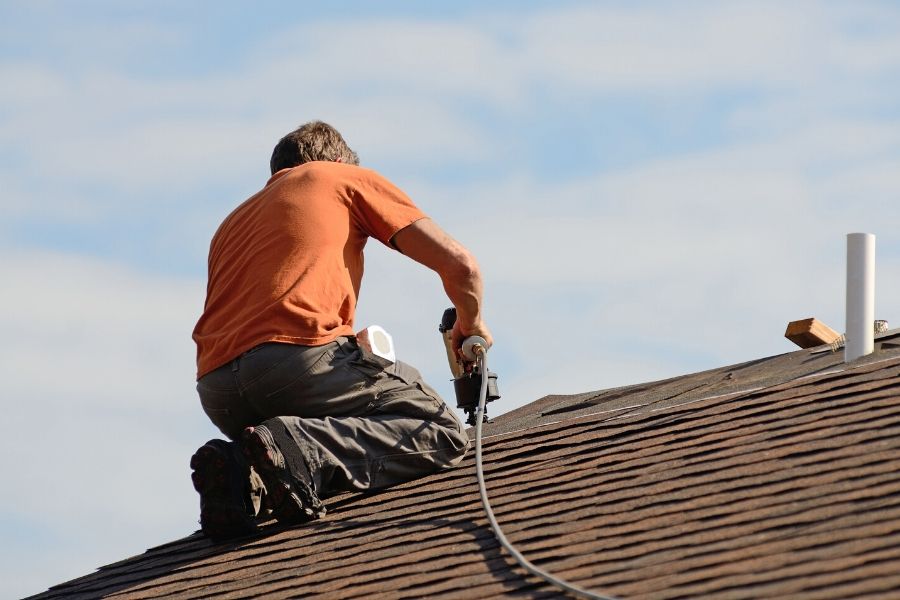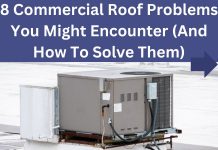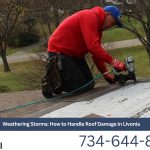The winter months can be especially tough on your commercial roof. Freezing temperatures, snow and ice can all cause significant damage if proper maintenance isn’t done to protect it. Taking the time to perform regular maintenance will help keep your roof in top shape and minimize any potential issues that could arise during the cold winter months.
Here are 8 maintenance tips to help keep your commercial roof safe this winter

Keeping your commercial roof safe through Winter can be tough, however it’s important to ensure your commercial roof is in the best possible condition. If you’ve got a commercial roof and want to know more about how you can keep it properly maintained throughout winter, then read along as we explore some tips.
1. Inspect Your Commercial Roof Regularly
It’s important to inspect your roof regularly for any damage or signs of wear-and-tear. Look for missing shingles, loose nails, cracks in the flashing, and other potential issues that could cause problems down the road. If you find any issues, make sure to address them as soon as possible.
2. Clean Out Gutters & Downspouts
Leaves, debris, and other debris can accumulate in your gutters and downspouts over time. This can lead to water pooling on your roof which can eventually lead to leaks or even worse, a collapse of the roof itself. Make sure to regularly clean out your gutters and downspouts during the winter months so that they are clear of all debris.
3. Trim Trees & Remove Snow
Fallen branches from trees can cause damage to your roof if they land on it while snow accumulation will add weight that could exceed the limits of what a commercial roof is designed to bear over time. Trim trees near your building regularly and remove snow from your roof when necessary (be sure not to use metal shovels as they could damage the surface).
4. Check Seals Around Vents & Flashing
Over time seals around vents and flashing may wear down due to weather changes or general wear-and-tear which allows water leakage into these areas that could cause serious damage if left unchecked for too long. Regularly inspect these areas for any signs of damage or wear-and-tear so that you can address them before it becomes too big of a problem for your commercial roof.

5. Inspect Flashings Around Skylights
Skylights are an area where water leakage is particularly common due to poor installation technique or general wear-and-tear over time so it’s important to check the flashings around them regularly for any signs of damage or deterioration that could lead to a major issue in the future if left unchecked long enough.
6. Install Ice & Water Shields
One way to protect against water damage is by installing ice & water shields along eaves exposed to inclement weather conditions such as heavy snowfall or icy temperatures which could otherwise create ice dams on your roof causing major issues with drainage on top of other potential damages caused by moisture seeping into vulnerable areas such as interior walls/ceilings etc.
7. Invest In A Professional Inspection
To ensure that everything is in order with your commercial building’s roofs it’s best practice have a professional inspection conducted periodically throughout each year especially during periods of extreme weather conditions like wintertime when roofs tend be more susceptible than usual due various factors including but not limited wind gusts, snow accumulation, icing etc. This can help prevent a lot of unnecessary damages and problems in the future.
8. Invest In Repairs When Necessary
No matter how much preventative maintenance you do for your commercial roof, there may come a time when repairs are needed either due neglect, age, structural integrity etc. it’s important invest in those repairs when necessary otherwise small problems now may turn into bigger ones later. Hiring a professional roofer to work on your commercial roof ensures you’re not going to have problems down the road.
With proper maintenance and care, you can keep your commercial roof safe throughout the harsh winter months ahead! Follow these eight tips for inspecting, cleaning, trimming trees, checking seals around vents and flashing, inspecting flashings around skylights, installing ice & water shields, investing in a professional inspection when necessary and investing in repairs when needed—to keep everything running smoothly all season long! Remember—it pays off in the long run!











